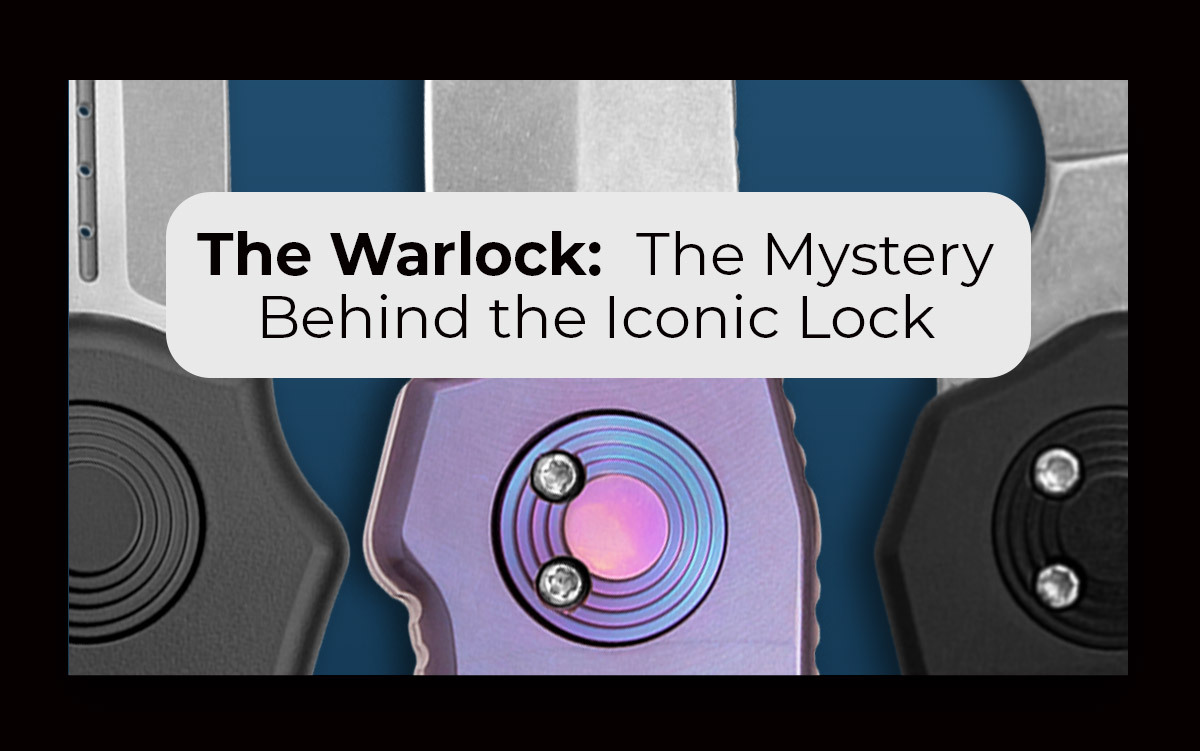The Warlock, The Phoenix, and the Dreddlock – The Trinity of Gravity

This is the story of a knife that almost wasn’t made.
The Paragon Warlock knife, produced by Asheville Steel, is a gravity knife that took the knife world by storm upon its release. Though the best known, the Warlock is one of three gravity knives in a series that Asheville Steel owner, Robert Anderson (Robb), calls “the Trinity of Gravity.” These three knives are the Warlock with its iconic dagger blade, the Phoenix (inspired by Robb’s idea of a phoenix’s wing) with a drop point blade, and the Dreddlock with its aggressive tanto blade.
The Warlock, however, was the first of its kind. It was nearly named the “Deadlock,” but, seeing as that name was taken (looking at you, Grant and Gavin Hawk), Robb kept brainstorming and came up with the name “Warlock.” When I asked him about it, he said it was “the perfect name for what I thought was a perfect knife.”
While it’s hard to objectively call anything perfect, it’s no stretch to say the Warlock is well-loved, a joy to use, a beast when it’s time to cut, and a staple in the knife community. Once you get your hands on one, you’ll never want to take them off; in this article, I’ll tell you why, and I’ll tell you the remarkable story of this knife, including how it almost fell through the cracks before it could be produced.
What is the Paragon Warlock Knife? How Does it Work?
Before story time, you need to know what the Warlock is. It’s really something special, boasting unique properties that should interest any knife enthusiast, no matter how new to the hobby.
The Warlock is a gravity knife. This means that gravity (or a flick of the wrist) provides the force that deploys the blade. In the case of the Warlock, this happens after the two oversized pivot buttons on its sides are depressed, opening the clamshell handle to allow the double-edged blade to swing out; when the buttons are pressed, four pins pinch the blade, keeping it centered along the opening in the handle. When the blade is all the way open, letting go of the buttons will close the handle, firmly locking the blade in place.
The design allows the Warlock to realize two near-impossible features: a safe double-edged folding blade and a closed-off handle. Gravity knives are legal to carry in most US states, but be sure to check your local laws if you’re thinking of picking one up. For all things gravity knives, check out our Everything You Need to Know About Gravity Knives article.
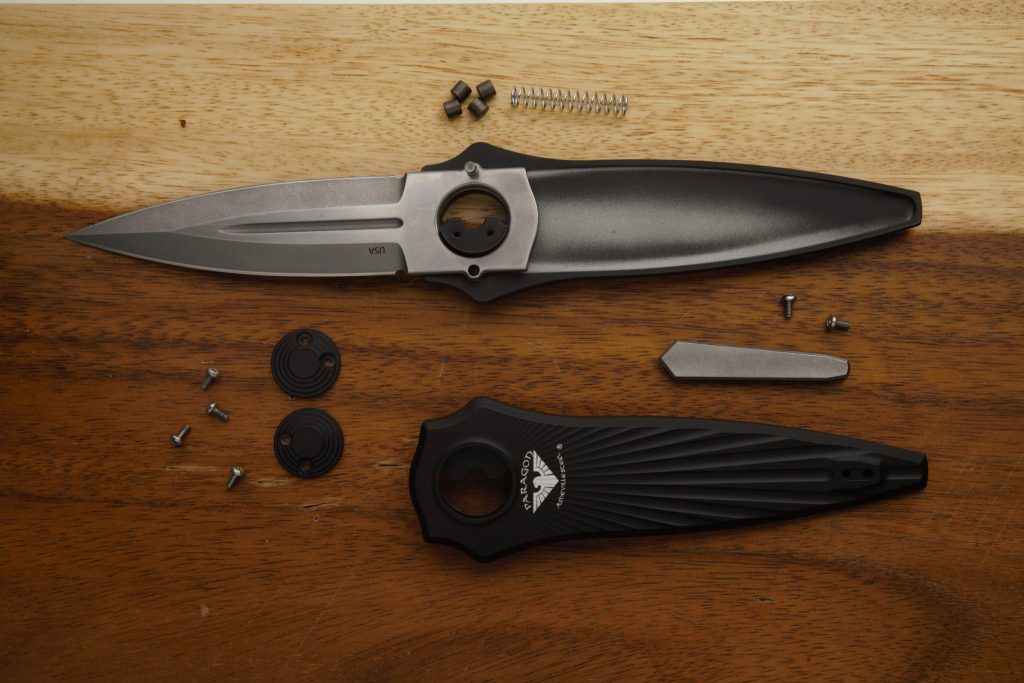
As fun as it is, Robb wanted the Warlock to be more than just a gimmicky knife. The opening mechanism is a fun trick, but it’s equally practical, allowing some of the best knife fidgeting while making safe a useful and otherwise dangerous sharpened back edge.
By nature, it has fabulous blade-to-handle ratio, and the handle has a narrow end that doubles as a kubaton for self-defense. It’s built to work hard and withstand tough environments. To ensure the best of the best quality, the Warlock and its two Mitchell Knife companions are manufactured in the USA; there’s a fourth Paragon gravity knife, but we’ll talk about that later. For now, check out the video below to see the Warlock in action.
History – The Origin of the Warlock Mechanism
Where did this unique design come from?
It’s story time now: It all started with a man named Jeffrey T. Mitchell, who sent a knife to the former owner of Paragon Cutlery Company (now Paragon Knives) some 25 years ago. Taking inspiration from the tactical knives produced around him in Florida, including offerings from Microtech Knives, he set out to design a practical folding knife with a double-edged blade. The style for tactical folders at that time was black aluminum with grip tape, which, as you’ll see in the pictures below, made it into these two gen two prototypes. After roughly ten years of on-and-off work, the prototypes that inspired the Warlock were finished. The first gen one prototype was a one-of-a-kind knife with no grip tap and a blade ground by Mark Waldrop. It’s this knife that Jeffery sent to the old Paragon Cutlery Company—and it wasn’t returned it him.
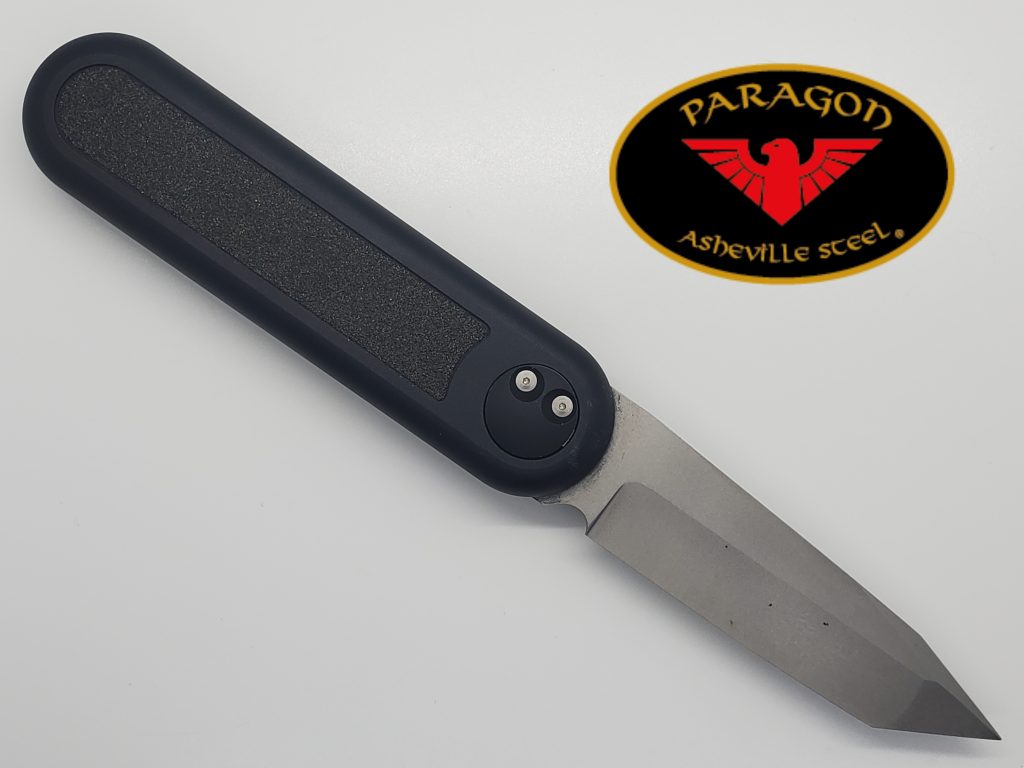
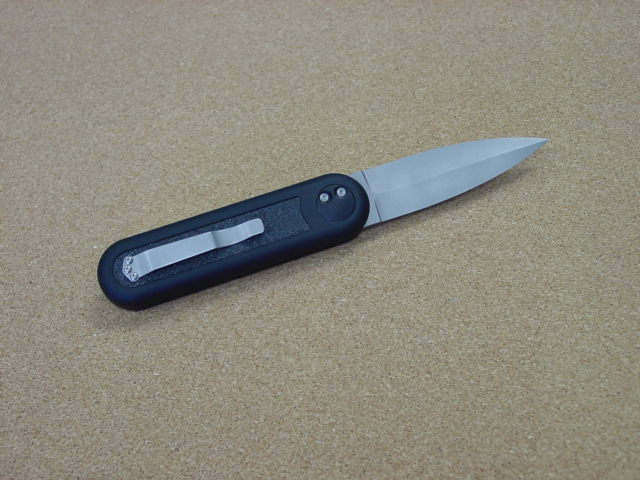
The knife’s mechanism grew out of the need to have the blade totally housed in the handle so that neither of its sharp edges would be exposed while closed. The clamshell design takes it further, closing all gaps to prevent dirt and dust from entering the mechanism. Jeffrey had done it! He had made a safe double-edged pocket knife! Knives with this clamshell lock type are known as Mitchell Knives, after the mechanism’s inventor.
But somewhere in the mess of Paragon Cutlery Company’s failing business, Jeffrey’s prototype was ignored and left to gather dust.
In 2006, Robb bought out Paragon Cutlery Company. He started his own LLC, Asheville Steel (named to draw attention to the excellent knives being manufactured in and around Asheville, North Carolina), and rebranded Paragon Cutlery Company to Paragon Knives. The company picked up where the old Paragon had left off, renaming and modifying some popular models and producing the Para X, a single-action OTF knife, which was the main money-maker for the company for some years. But something spectacular would soon overshadow it entirely.

Remember Jeffrey’s prototype? Robb soon found it. The problem? Jeffrey patented the lock, making it so Asheville Steel couldn’t legally sell a knife using the mechanism. Despite extensive searching, Jeffrey couldn’t be found. But in hopes of working with him in the future, Robb did what he could: He mocked up designs, worked with an engineer, and finalized his upgrades to the prototype. The resulting cutlery was the original Trinity of Gravity: the Warlock, Phoenix, and Dreddlock. Robb explained that his thinking was that, sooner or later, the design would make it into the open market, or he would find the guy owning the patent. Either way, his Trinity of Gravity would be produced. In anticipation of this, Robb sent a Warlock here to Blade HQ. A YouTube video was made, which, by some blessing of the knife gods, went viral, grabbing Jeffrey’s attention. Jeffrey reached out to Robb and the rest is history.
A Turning Point – The Rise of Paragon Knives
Robb told me this was the biggest turning point for Asheville Steel. The year was 2015—that’s nine years after Robb first found the prototype—and the Warlock and its companions were released and became an instant success! Asheville Steel, like other great knife companies, is always looking to improve its products. And in 2020, a new opportunity literally walked through the door.
Enter Dylan Davis, owner of Hypercut Manufacturing in Hendersonville, North Carolina. He came to Robb with a product to sell: the Hang and Bang Magnetic Knuckles. Robb liked the knuckles, but he liked Dylan’s company more, moving all his manufacturing there. Dylan and Robb worked together to pioneer improvements to the Warlock and other Paragon folders, producing the next generation of gravity knives.
Currently, their primary focus is the Krazor. It was going to be a Wharncliffe-style knife called the Grimmlock, but Robb struggled with the edge-to-handle ratio and modified the design into a straight razor-like gravity folder. If Paragon’s gravity knives were great before, they’re excellent now, with refined designs, tighter tolerances, and improved reliability. In 2022, the Warlock won Most Innovative American Design at BLADE Show, further clarifying its mark in the knife world.
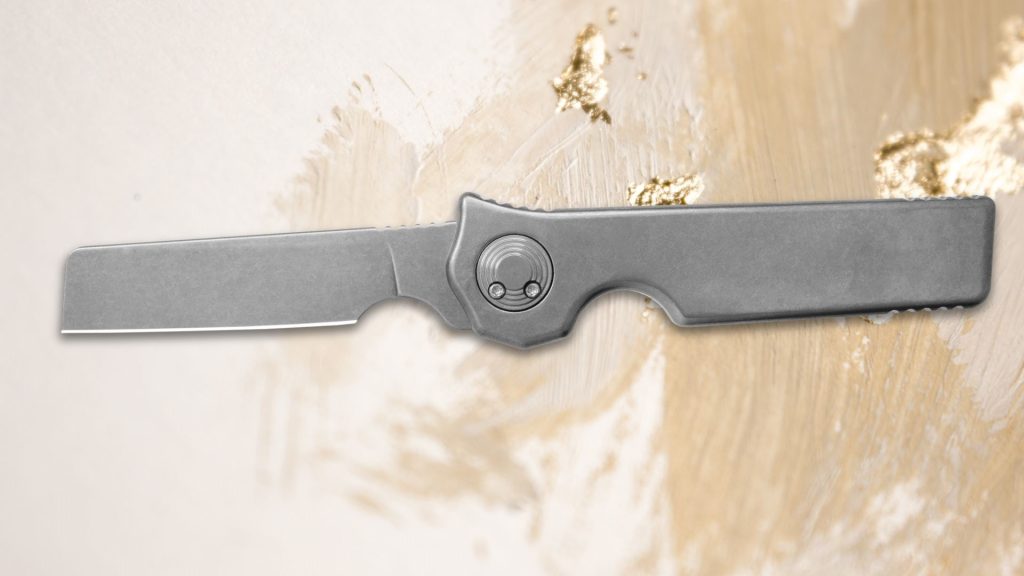
Conclusion
You might say the Warlock has a rich history, a troubled past, or an inspiring story—whatever you say, it’s the result of hard work, dedication, and a dream. Now the award-winning Warlock and the other Paragon gravity knives are better than ever: reliable cutting tools that are as entertaining as they are practical in an EDC or tactical capacity. There’s an argument to be made that no knife collection is truly complete until it boasts a Paragon Warlock.
